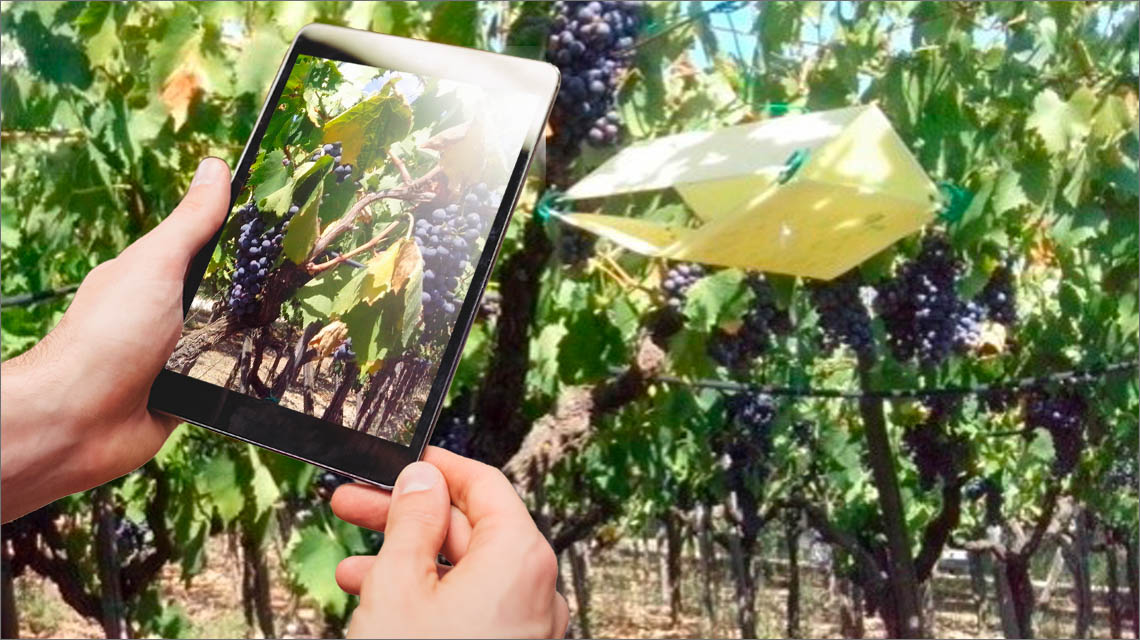Italian National Agency for New Technologies, Energy and Sustainable Economic Development

Agriculture: Georeferenced platform to protect and enhance vineyards
The first geo-referenced and interactive map of the Basilicata vineyards to protect and enhance the local wine sector has been developed as part of the PRO.S.IT project[1], and carried out, among others[2], by the Qui Vulture Consortium and the University of Basilicata, in collaboration with ENEA, it was funded with 260 thousand euro by the Basilicata Region.
It is a web platform, implemented by the Institute of Methodologies for Environmental Analysis of the Cnr for operators in the sector to share information on individual land parcels of vineyards with geospatial (altitude, slope, exposure), biophysical ( photosynthetic activity, biomass density and plant health) data and on the presence of harmful insects. "We have provided local winegrowers with a dynamic tool, easy to use from computers and smartphones, based on open source technologies which, by sharing site-specific data, allows the use of participatory monitoring of Lobesia botrana, an insect widespread throughout Italy which feeds on grapes, causing serious significant losses in grape production”, explained Ferdinando Baldacchino, entomologist at the Bioproducts and Bioprocesses Laboratory of the ENEA Trisaia Research Center (Matera).
"Sharing data on trap capture by winegrowers" - continued the researcher - will make it possible to obtain, in real time, information on the flight pattern of this insect in a wider area of one's vineyard, which enables agricultural entrepreneurs proper positioning of the intervention: from now on, Lucanian companies will have an innovative tool to improve production management and guarantee grape quality”.
As part of the PRO.S.IT project, ENEA distributed a questionnaire to wine producers to assess the control strategies adopted against the vine moth (Lobesia botrana) and the level of satisfaction achieved. The survey involved the most representative Lucanian stakeholders, including private companies and associations, mainly in the Vulture wine-growing area, in the province of Potenza. The questionnare concerned type of management (mandatory integrated pest management, voluntary integrated production and organic farming), means of control used (chemical, biological insecticides and sexual confusion), decision-making bases for the intervention (personal experience, indication of technicians, flight monitoring, egg sampling, phytosanitary bulletins and forecast models) and satisfaction with the results achieved.
The questionnaire responses showed, for example, that control of Lobesia botrana is carried out using mixed strategies: chemical insecticides in 75% of cases, often even in the presence of sexual confusion, applied to 50% of the vineyards investigated, while only 25% uses biological insecticides.
"These results describe a dynamic and sustainable viticulture, although still uncertain and evolving in the use of the technological means available, after the abandonment of phosphoric esters. Furthermore, the simultaneous use by agricultural entrepreneurs of multiple sources of information, including non-corporate sources such as phytosanitary bulletins, emerged clearly (75% of the sample). Hence the need to develop a technological, informative, participatory and interactive tool like the 'PRO.S.IT' web-GIS platform, an ideal support for the first example of citizen science applied to the protection of our viticultural heritage”, pointed out Baldacchino.
Furthermore, the project team has developed methods capable of providing constantly updated information on growth dynamics of vineyards, water status, sequestration of carbon dioxide by the plant and choice of rootstocks of the vine, and practical agricultural techniques to safeguard biodiversity like spontaneous grassing.
As regards the winemaking process (and copper reduction in organically grown grapes), one of the main results obtained was setting up of a bank of autochthonous Basilicata wine yeasts isolated in different areas and varieties of the Region. The oenological characteristics of different wine yeast strains are summarized in an information sheet which includes an indication of the strain behavior for oenological parameters, such as fermentation performance, aromatic profile and peculiar characteristics, such as capacity to conduct fermentation with low doses of sulphites and to reduce copper.
Foto e Video
Note
[1] PRO.S.IT (PRODUCTIVITY AND SUSTAINABILITY IN vITi-viniculture) PSR Basilicata 2014-2020. Measure 16 - Cooperation. Sub-measure 16.1 - Support for the establishment and management of the EIP Operational Groups in agricultural productivity and sustainability. The project was born within the "Vite & Vino" Operating Group.
[2] Institutions: University of Basilicata with the Departments DICEM, DIS and SAFE, Cnr-IMAA and CNR-ISM, the Lucan Agency for Development and Innovation in Agriculture (ALSIA); consortia and companies: Consorzio Qui Vulture (Lead partner), Con.Pro.Bio. Lucano, Starfinnsrl, Geospazio Italia Srl, Agreenmentsrl, Az. Viticola Mastrangelo, Az. Viticola Marino, Az. Masseria Cardillo, Az. Agr. Cifarelli, Az. Agr. Petito, Az. Agr. Battifarano, Az. Agr. F.lli Dragone, Az. Biologica Scarano, Az. Agr. Lagaria, Coop. Agriculture 2000, Lucana Regional Enoteca Association, Aglianico del Vulture DOC and DOCG superior wine protection consortium.
